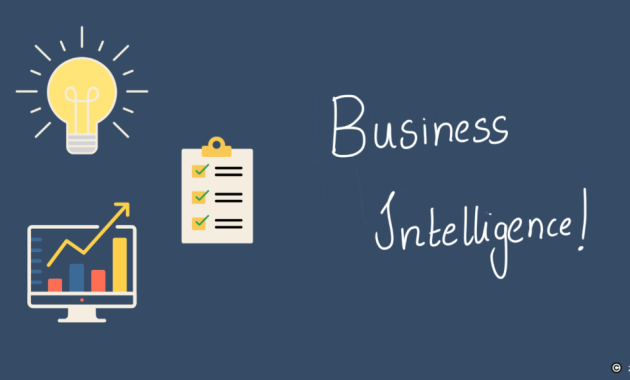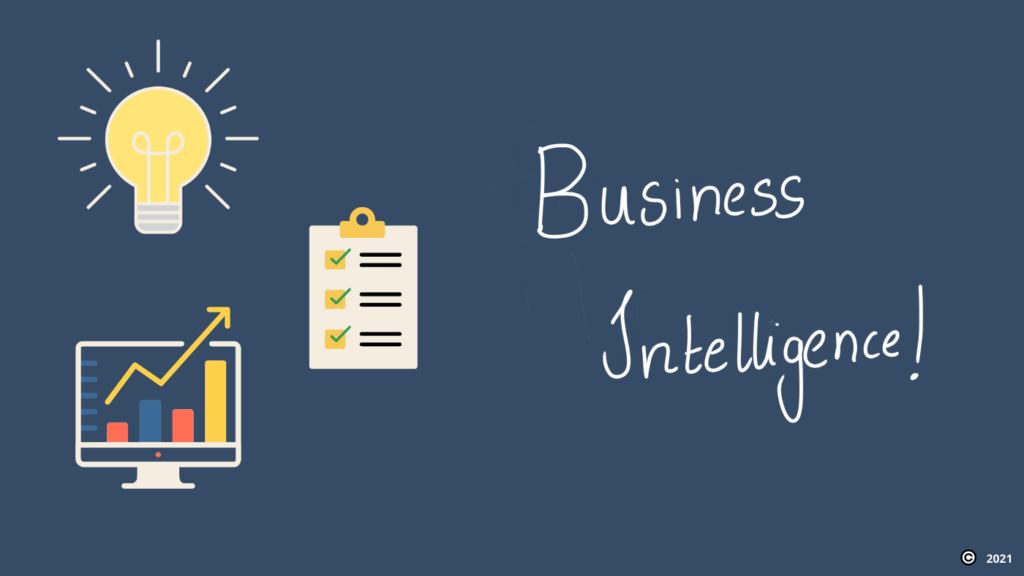
Boost ROI with Business Intelligence Software for All Sizes
In today’s data-driven world, businesses of all sizes are seeking ways to gain a competitive edge. One of the most effective tools for achieving this is business intelligence (BI) software. This article will explore how BI software can significantly boost your Return on Investment (ROI), regardless of your company’s size. We will delve into the benefits, implementation strategies, and real-world examples of how BI software is transforming businesses across various sectors.
The core promise of business intelligence software is simple: turning raw data into actionable insights. This empowers businesses to make informed decisions, optimize operations, and ultimately, increase profitability. The beauty of BI software lies in its versatility. It can be tailored to meet the specific needs of small startups, medium-sized enterprises (SMEs), and large corporations alike. The benefits are universally applicable, although the implementation and scale may vary.
Understanding Business Intelligence Software
Business intelligence software encompasses a range of tools and technologies designed to collect, analyze, and visualize data. This data is typically sourced from various sources, including internal databases, customer relationship management (CRM) systems, and external market research. The software then transforms this data into easily understandable reports, dashboards, and visualizations. These tools enable users to identify trends, patterns, and anomalies that might otherwise remain hidden.
Key features of BI software often include:
- Data Integration: The ability to connect to and pull data from multiple sources.
- Data Warehousing: Secure storage and organization of data.
- Data Analysis: Statistical analysis and data mining capabilities.
- Reporting and Dashboards: Creation of interactive reports and dashboards.
- Data Visualization: Charts, graphs, and other visual representations of data.
- Data Discovery: Tools to explore data and uncover hidden insights.
- Predictive Analytics: Forecasting future trends and outcomes.
The ultimate goal is to provide users with a comprehensive understanding of their business performance. This includes sales, marketing, operations, finance, and customer service. This comprehensive view allows for data-driven decision-making. It also allows for the identification of areas for improvement and optimization.
Benefits of BI Software for Boosting ROI
The primary goal of any business is to maximize its ROI. Business intelligence software provides several avenues for achieving this:
Improved Decision-Making
BI software provides data-driven insights. This leads to better-informed decisions. Instead of relying on gut feelings, businesses can base their strategies on concrete evidence. This reduces the risk of costly mistakes and increases the likelihood of successful outcomes.
Enhanced Operational Efficiency
BI software can identify bottlenecks and inefficiencies in your operations. By analyzing data on processes, you can optimize workflows. This can lead to significant cost savings and improved productivity. BI software helps streamline operations.
Increased Sales and Marketing Effectiveness
BI software enables businesses to understand their customers better. By analyzing sales data and customer behavior, you can tailor your marketing campaigns. You can also personalize your sales efforts. This leads to higher conversion rates and increased revenue. You can also identify your best customers.
Better Customer Relationship Management
BI software can provide insights into customer behavior and preferences. This allows you to improve customer service and build stronger relationships. Satisfied customers are more likely to make repeat purchases and recommend your business to others.
Cost Reduction
By identifying inefficiencies and optimizing processes, BI software can help you reduce costs. This can include everything from reducing waste to negotiating better deals with suppliers. This ultimately contributes to a higher ROI.
Implementing BI Software: A Step-by-Step Guide
Implementing BI software is a strategic undertaking. It requires careful planning and execution. Here is a step-by-step guide to help you get started:
- Define Your Goals and Objectives: Clearly define what you want to achieve with BI software. What specific business problems are you trying to solve? What key performance indicators (KPIs) are you trying to improve?
- Assess Your Data Sources: Identify all the data sources that are relevant to your business. This includes internal databases, CRM systems, and other relevant data sources.
- Choose the Right BI Software: Research and select the BI software that best suits your needs. Consider factors such as ease of use, scalability, and integration capabilities. [See also: Choosing the Right BI Software for Your Business]
- Develop a Data Strategy: Create a plan for collecting, storing, and managing your data. This includes data governance policies and procedures.
- Implement the Software: Install and configure the BI software. This may involve integrating it with your existing systems.
- Train Your Employees: Provide training to your employees on how to use the software. This will ensure that they can effectively use the tools and interpret the data.
- Monitor and Evaluate: Continuously monitor the performance of the software. Evaluate its effectiveness in achieving your goals. Make adjustments as needed.
BI Software for Businesses of All Sizes
The beauty of business intelligence software is its adaptability. It’s not just for large corporations with massive budgets. There are BI solutions tailored to fit the needs and budgets of businesses of all sizes.
Small Businesses
For small businesses, BI software can provide a significant advantage. It can help them to understand their customers better, optimize their marketing efforts, and make better decisions. Many affordable and user-friendly BI tools are available. These are specifically designed for small businesses with limited resources. Starting small is often the best approach. This allows for gradual implementation and learning.
Medium-Sized Enterprises (SMEs)
SMEs can leverage BI software to improve operational efficiency, increase sales, and reduce costs. BI software can help them to compete more effectively with larger organizations. SMEs often have a wealth of untapped data. BI software can unlock this potential.
Large Corporations
Large corporations can use BI software to gain a deeper understanding of their business. This will help them to make better decisions, optimize their operations, and improve their ROI. They can also use BI software to identify new opportunities for growth. Large corporations often have complex data needs. BI software can handle this complexity.
Real-World Examples of ROI Boosts with BI Software
Many businesses have successfully used BI software to boost their ROI. Here are a few examples:
- Retail: A retail chain used BI software to analyze sales data and customer behavior. This helped them to optimize their product placement and inventory management. This resulted in a 15% increase in sales.
- Manufacturing: A manufacturing company used BI software to identify bottlenecks in its production process. This helped them to improve efficiency and reduce production costs. This led to a 10% reduction in operating costs.
- Healthcare: A hospital used BI software to analyze patient data and improve patient outcomes. This improved patient satisfaction and reduced readmission rates. This also reduced healthcare costs.
- Finance: A financial institution used BI software to detect fraudulent transactions. This helped them to prevent financial losses. This also protected their reputation.
These are just a few examples of how BI software can be used to boost ROI. The specific benefits will vary depending on the industry and the specific business needs. The common thread is the ability to make data-driven decisions.
Choosing the Right BI Software for Your Business
Selecting the right BI software is crucial for success. Consider the following factors:
- Ease of Use: The software should be easy to use and understand. This is especially important for businesses without dedicated data analysts.
- Scalability: The software should be able to scale as your business grows. This is important for future-proofing your investment.
- Integration Capabilities: The software should integrate with your existing systems. This includes your CRM, ERP, and other relevant applications.
- Data Visualization: The software should offer robust data visualization capabilities. This allows for easy interpretation of data.
- Reporting and Dashboards: The software should provide customizable reporting and dashboard features. This helps to monitor key metrics.
- Cost: Consider the cost of the software and the ongoing costs associated with it. This includes licensing fees, training, and support.
- Support and Training: Ensure that the vendor provides adequate support and training. This will help you to maximize the value of the software.
By carefully evaluating these factors, you can choose the BI software that is the best fit for your business. This will maximize your chances of boosting your ROI.
The Future of Business Intelligence
The future of business intelligence is bright. As technology continues to evolve, BI software will become even more powerful and accessible. Key trends to watch include:
- Artificial Intelligence (AI) and Machine Learning (ML): AI and ML are being integrated into BI software. These technologies automate data analysis. They also provide more advanced insights.
- Cloud-Based BI: Cloud-based BI solutions are becoming increasingly popular. They offer greater flexibility, scalability, and cost-effectiveness.
- Self-Service BI: Self-service BI tools are empowering business users to analyze data. This reduces the reliance on IT departments.
- Data Democratization: The goal is to make data accessible to everyone in the organization. This will foster a data-driven culture.
These trends will continue to shape the landscape of business intelligence. Businesses that embrace these advancements will be well-positioned to succeed in the future. They will also continue to boost their ROI.
Conclusion: The Power of BI Software to Boost ROI
Business intelligence software is a powerful tool that can help businesses of all sizes boost their ROI. By providing data-driven insights, BI software empowers businesses to make better decisions. It also improves operational efficiency, increases sales, and reduces costs. Implementing BI software requires careful planning and execution. However, the potential benefits are significant. The future of BI is promising. Businesses that embrace the latest trends will be well-positioned to succeed. They will also continue to boost their ROI. Investing in BI software is an investment in your business’s future.
By leveraging the power of business intelligence software, you can unlock the full potential of your data. You can also drive sustainable growth and achieve a higher ROI. Embrace the power of data and transform your business today. Consider the strategies and examples outlined in this article. Take the first step towards making data-driven decisions. Your business will thank you.

